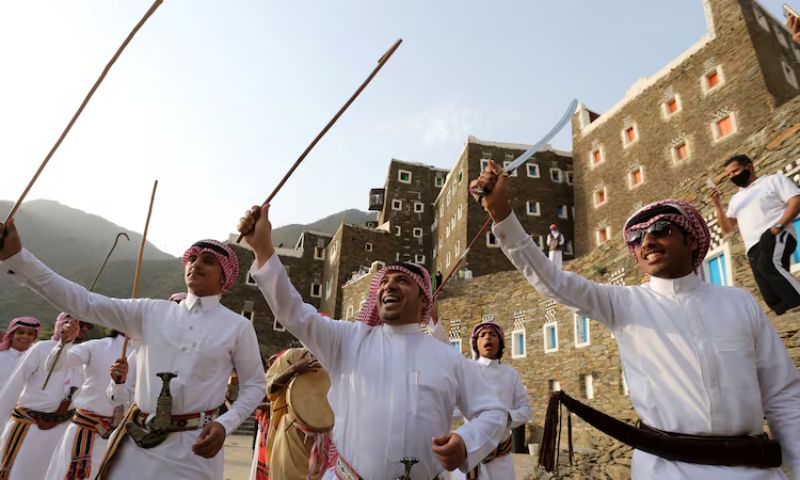RIYADH: The Kingdom of Saudi Arabia boasts a rich cultural heritage, with each region showcasing unique folkloric traditions that harmonize with the natural environment.
Among these is the Saudi Ardah, a celebrated folkloric group dance recognized for its stunning performances and accompanying songs that reflect historical and cultural significance. The Ardah symbolizes the enduring bond between the leadership and the people, with men expressing loyalty and love for their homeland.
Originally performed in preparation for war, the Ardah involved the army prince inspecting his soldiers to assess their readiness for battle. This majestic, synchronized performance aimed to boost the morale of fighters, particularly horsemen. Over time, it transformed into a celebratory act for welcoming victorious soldiers returning from combat.
The Ardah holds a vital place in the history of the Kingdom’s unification, led by King Abdulaziz bin Abdulrahman Al-Saud, who recognized its cultural importance prior to his unification efforts. Characterized by majesty and dignity, the Ardah features orderly rows, raised flags, and swords, all complemented by traditional attire.
Key elements of the Ardah include flags, a mehrab (lead chanter), rows of performers, poetic verses, drums, weaponry, and distinctive costumes. As the Kingdom transitioned to a more secure era, the Ardah evolved into a joyous expression of cultural pride, often performed at official occasions and to welcome important state guests.
The performance involves two groups: war poem chanters and drummers, with a flag bearer positioned between them. The chanters begin with stirring verses, while the drummers provide rhythmic support as participants raise their swords. The performance typically starts with “Hawraba” or “Shobash,” announced by a powerful poet who arranges the performers into two opposing rows of 40 to 50 participants, ensuring balance as they hold hands or form a circle while reciting verses together.
The physical aspect begins with “al-Nazr,” where performers lean right and left while stationary. As the second half of the poem unfolds, the drums roll and the rows sway in a knee-bending motion, synchronizing the raising or lowering of swords. Two types of drums are used: the large “Takhmir” and the smaller “Tathlith,” both covered with camel skin and adorned with colorful threads. The drummers execute coordinated movements, enhancing the visual spectacle.
The tradition also includes a horse parade called “al-Haddwa,” where a horseman introduces himself with chants while riding, showcasing pride and enthusiasm before joining the performers. Attire for the Saudi Ardah is vibrant and intricately embroidered, featuring garments like Daqla, Sudairy, Zboon, and Shalhat, often accessorized with swords or guns.
The Ardah has received recognition from Custodian of the Two Holy Mosques King Salman bin Abdulaziz Al Saud, reflecting his commitment to preserving the Kingdom’s history and cultural heritage. This dedication was highlighted when the Ardah was included in the UNESCO List of Intangible Cultural Heritage in December 2015, along with the establishment of the National Center for Saudi Ardah in 2017 at the King Abdulaziz Foundation for Research and Archives. This center aims to promote culture, national identity, and support the arts that are cherished in the Kingdom.
























